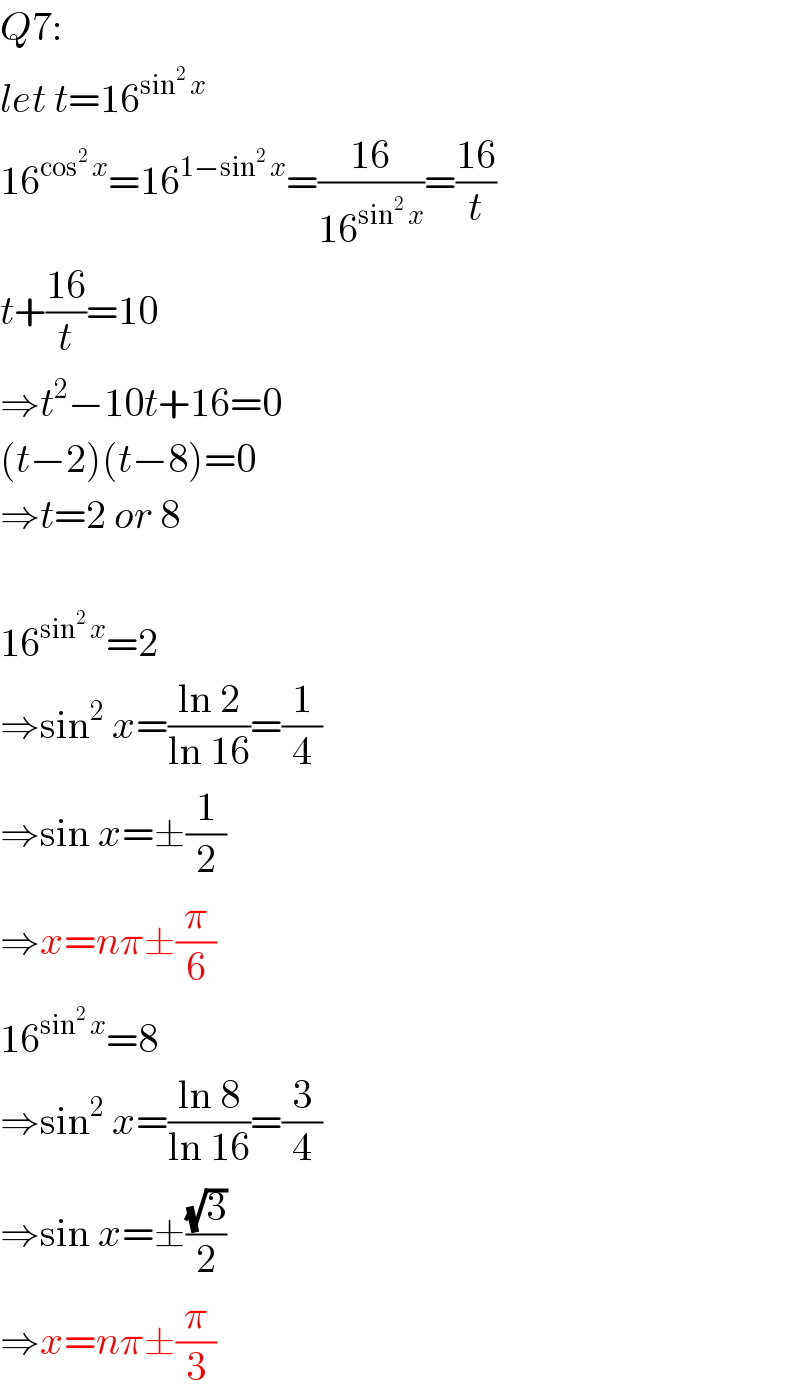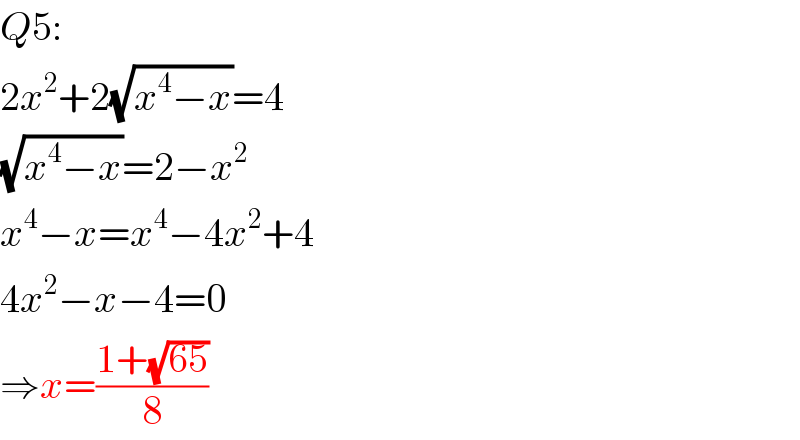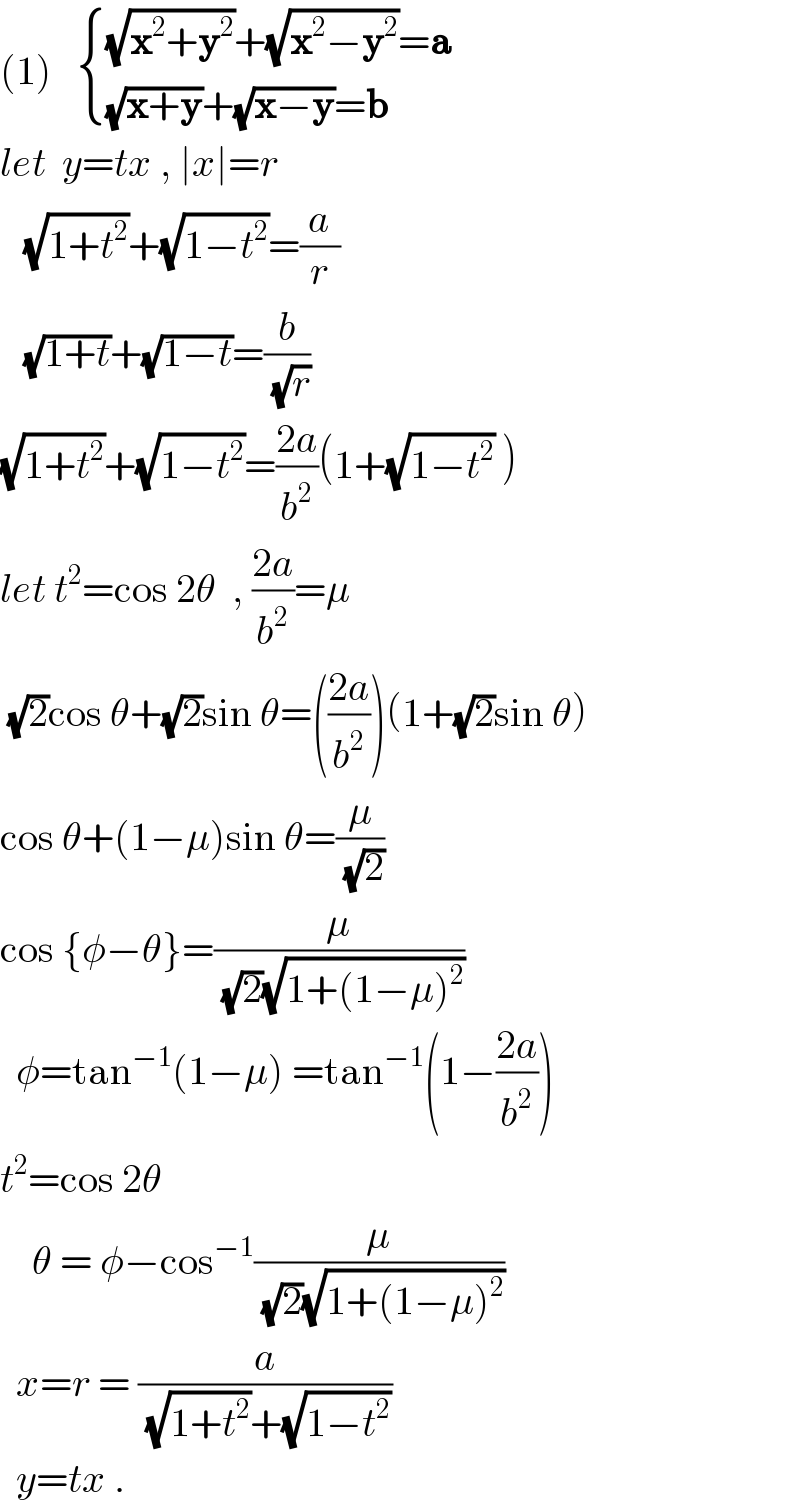
Question and Answers Forum
Question Number 69995 by behi83417@gmail.com last updated on 29/Sep/19
![1. { (((√(x^2 +y^2 ))+(√(x^2 −y^2 ))=a)),(((√(x+y))+(√(x−y))=b)) :} [a,b∈R^+ ] 2. { (((√((√x)+y))+(√(x+(√y)))=a)),(((√((√x)−y))+(√(x−(√y)))=b)) :} 3. { ((x^2 +y^2 =(a−b)xy)),((x^3 +y^3 =ab(x−y))) :} 4. { ((x+y+z=a)),((x^2 +y^2 +z^2 =b)),((x^3 +y^3 +z^3 =abxyz)) :} 5. (√(x^2 +(√x)))+(√(x^2 −(√x)))=2 6. (√(x^2 +x+1))+(√(x^2 +x−1))+(√(x^2 −x−1))=1 7. 16^(sin^2 x) +16^(cos^2 x) =10 8. 2^(lnx) =x.ln(x+(√2))](Q69995.png)
Answered by mr W last updated on 29/Sep/19

Commented by behi83417@gmail.com last updated on 29/Sep/19

Answered by mr W last updated on 29/Sep/19

Answered by ajfour last updated on 29/Sep/19

Commented by behi83417@gmail.com last updated on 30/Sep/19

Answered by mr W last updated on 01/Oct/19
![(3) x+y=u xy=v (x+y)^2 −2xy=(a−b)xy u^2 =(a−b+2)v x^3 +y^3 =(x+y)[(x+y)^2 −3xy]=u(u^2 −3v) x−y=(√((x+y)^2 −4xy))=(√(u^2 −4v)) u(u^2 −3v)=ab(√(u^2 −4v)) uv(a−b−1)=ab(√(u^2 −4v)) u^2 v^2 (a−b−1)^2 =a^2 b^2 (u^2 −4v) (a−b+2)(a−b−1)^2 v^2 =a^2 b^2 (a−b−2) ⇒v=((ab)/(a−b−1))(√((a−b−2)/(a−b+2)))=p say ⇒u=±(√((ab(√((a−b+2)(a−b−2))))/(a−b−1)))=±q say x^2 ±qx+p=0 x,y=(1/2)(±q±(√(q^2 −4p)))](Q70104.png)
